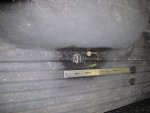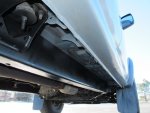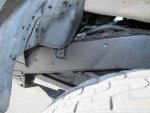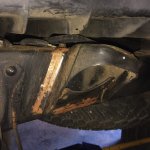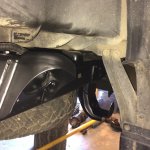Your truck uses computers. Don’t be afraid.
It's certainly a sliding scale. It's obvious when you take several individual points but the change is continuous. I owned a 1991 truck for a long time, bought a 2001 Tacoma TRD to replace it and ended up a year later selling the 2001 and buying a 2008 TRD Offroad.
When you look generally the 2005-2008 Tacoma isn't that much different than a 2002-2004 in complexity, at least at the base level. The 1991 was quite a bit more simple than my 2001 Tacoma and even more so against my 2008. But all my trucks have been manual transmissions, so that's one major computer complexity that hasn't changed. Both my '01 and '08 have power windows and locks, just two forward air bags, plain old radios, vacuum boosters (no TRAC on either). The only major thing that added complexity between the two Tacos is the stupid electric shift transfer case on the 2005+.
But think about it generally. The Tacoma went to cartridge unit front wheel bearings, which aren't field serviceable like the 79-95 trucks that still used loose taper bearings. The 1986+ trucks got IFS so there's no real difference in having steering links and ball joints and alignment issues. The older trucks had a simple ECU that didn't strictly need a diagnostic computer like the 1995+ trucks with OBD-II do. In that vein the 1GR-FE has almost no distributor, vacuum valves or a mess of a harness like the 3.4L since it was designed with the ability to meet emissions from the very start, so the diagnostics on it are actually simpler. In my experience it's comes down to two things, has the crank sensor or ignition coil pack failed? Otherwise it's the same mechanical issues as ever, rings, cams, chains.
My reasoning for jumping from the 1991 to 2001 and finally the 2008 was everything eventually wears out. My 1991 was at the point to continue to rely on it meant more serious rebuilding. Everything wears out. Everything. If you want to keep your 1st gen Tacoma forever you will eventually hit a point when you need to do a partial or maybe full frame-off. Rust, rust, rust. Also sheet metal gaps start showing and the frame will need to be straightened and painted. All the connectors get brittle, plastic parts break just from use.
I considered doing the restoration on my 1991 but also know Toyota eventually discontinues parts so keeping a 25+ truck going gets to be about stockpiling parts and being a collector. That's fine for a second truck but I went through it with a 1978 FJ40, which is why I bought the 1991 in the first place. I needed a daily driver that I could count on not being on jack stands waiting for a part. Parts unavailability was starting to happen here and there with the 1991 (this was 2015) and will soon start with soon the 1995-1999 era Tacoma. So you have to find NOS, find suitable aftermarket parts that are the same quality as OEM, etc. It's not always easy.
Also the 2nd gen trucks are worth it for the engine, it's a really good truck motor that doesn't struggle on the highway. My 22R-E, yeah, loved that little tractor motor but Interstates were not fun. The 3.4L V6 is better but the 1GR is MUCH better IMO. I doubt Toyota will ever make a better V6 petrol engine. The current 3.5L V6 2GR in the Tacoma is a fine motor but not nearly as good as a
truck engine.
Couple this with the frame rot issue that is present on all the 1995-2004 Tacomas to some degree (and now the 2005-2010, which wasn't the case when I bought my 2008). I dunno, I don't think any 1995+ truck is really going to last forever like a FJ40 or the earlier Hilux trucks. I mean, an FJ40 from the 1960s had 5 circuits in the harness and the metal was as thick as an aircraft carrier hull. That's the level of complexity that tends to last a long time. A 2003 Tacoma still has several computers, the frame thickness is less than the body sheet metal of those old trucks. It wasn't made to last or made to be continuously repaired.

